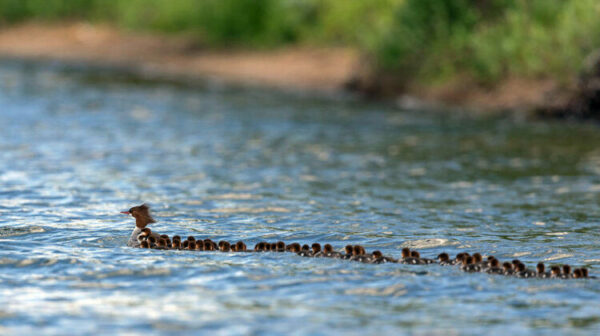
“It was mind blowing,” the photographer, Brent Cizek, said.
Where she goes, they follow. All 76 of them.
A female duck in Minnesota has about six dozen ducklings in her care, a remarkable image that an amateur wildlife photographer captured on a recent trip to Lake Bemidji, about 150 miles northwest of Duluth, Minnesota.
“It was mind blowing,” the photographer, Brent Cizek, said. “I didn’t know that a duck could care for that many chicks.”
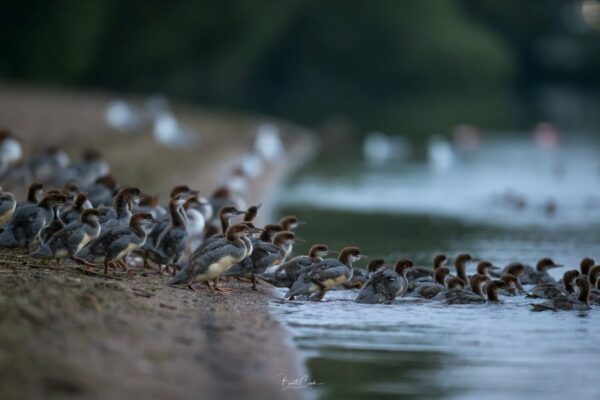
It’s not unusual to see many ducklings gathered together. Some 20 or 30 have been reported with a single hen. But 70-plus?
“It’s an extraordinary sighting,” said Richard O. Prum, an ornithologist at Yale University.
Experts say the photo, which has been shared among bird conservationists and featured on the National Audubon Society’s website, offers an extreme example of a somewhat common phenomenon in nature. Here’s a look at the story — and the science — behind the striking image.
What’s going on in that photo?
Cizek said he first stumbled upon the brood in late June, when he headed out to the local lake in an 8-foot plastic boat he bought to fuel his outdoor photography. He said he wasn’t expecting to take many pictures that day — he brought one camera and one lens — but then he saw the duck and her babies.
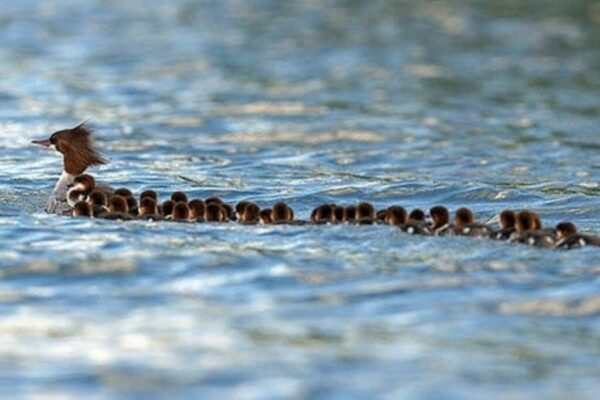
He began snapping photos while trying to steer in choppy water. He rushed home to look at his camera roll, he said, and found that only one image turned out: the duck, who is being called Mama, blazing the way for the long line of ducklings in her wake.
“It kind of compels you just to look and wonder: How?” Cizek said. “How did this happen? How is this mom taking care of all of these ducklings? She just looks really proud and stoic in the photo.”
He estimated then that there were more than 50 ducklings in the group. On another trip to the lake this month, he said, he counted as many as 76.
Could all of those babies be hers?
No. Mama is a common merganser, a duck found on freshwater lakes. Females can lay up to a dozen or so eggs, according to the National Audubon Society.
But, in a twist, common mergansers don’t incubate only their own eggs. Experts say females often “dump” their eggs in the nests of other birds in an effort to spread out their offspring and increase the chances of survival.
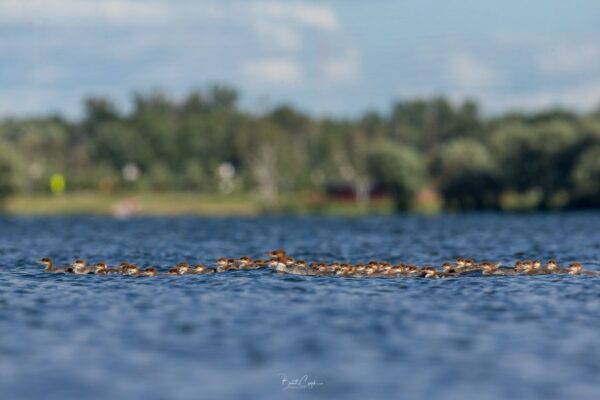
Still, even if Mama had other birds’ eggs dumped in her nest, Prum said she could not have managed to sit on so many eggs.
“It’s impossible for this individual to have incubated, you know, 50 eggs,” he said. “That is really too much.”
Why is she caring for so many ducklings?
Some birds, including common mergansers and ostriches, raise their babies in a day care system that’s called a crèche, experts say.
In a crèche, females leave their ducklings in the care of one female — often an older female who is experienced at raising babies, said David Rave, an area wildlife manager who oversees the Bemidji region for the Minnesota Department of Natural Resources.
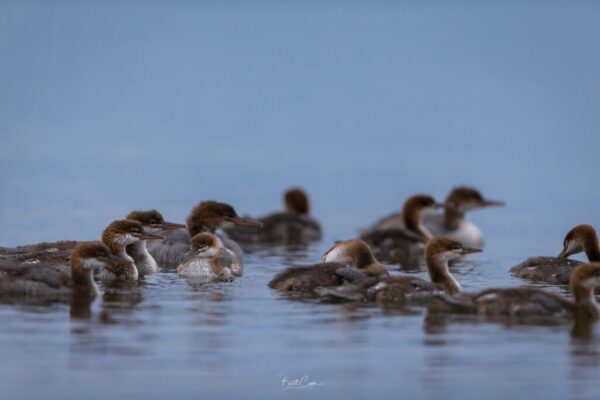
The females at Lake Bemidji, many of which are related, lay eggs that hatch around the same time, he said. Afterward, he said, the adult ducks go off to molt their feathers, leaving their broods in the care of a matriarchal female.
“She’d be kind of like the great-grandmother,” Rave said.
While the practice is common for this species, Rave said, the size of the crèche in the photo is exceptional. “That’s a lot,” he said. “I’ve seen crèches up to 35 and 50 often, but 70 — that would be a very big crèche.”
Cizek, the photographer, has gone back to the lake several times to photograph the ducklings as they grow. He said he had seen other adult ducks around the brood, but when Mama swims away, the ducklings follow her.
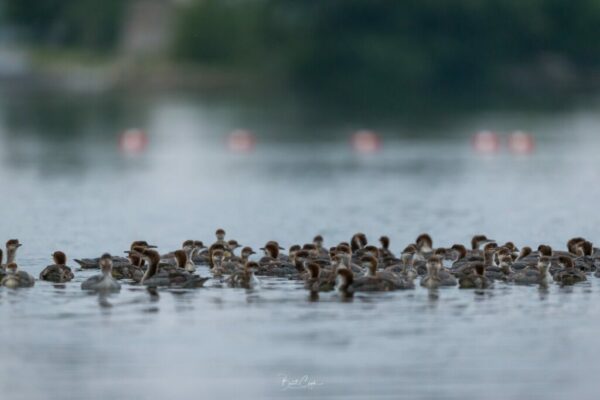
“Everybody is really just amazed,” Cizek said. “Everybody keeps saying, ‘Mom of the Year.’”

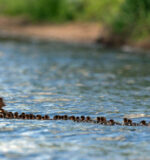



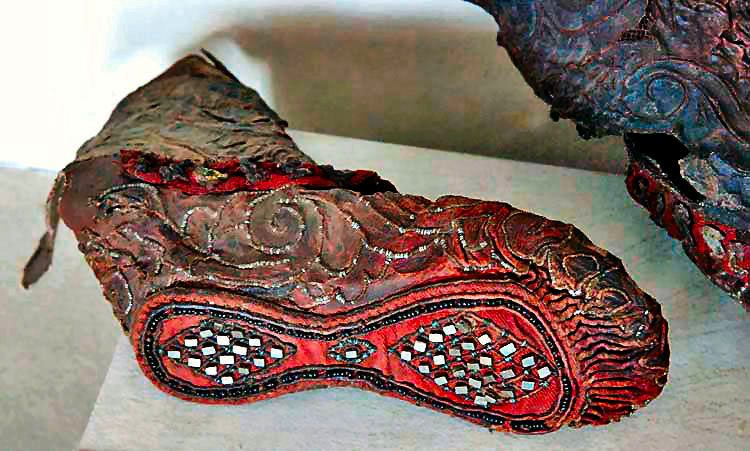


 Photographer Finds Locations Of 1960s Postcards To See How They Look Today, And The Difference Is Unbelievable
Photographer Finds Locations Of 1960s Postcards To See How They Look Today, And The Difference Is Unbelievable  Hij zet 3 IKEA kastjes tegen elkaar aan en maakt dit voor zijn vrouw…Wat een gaaf resultaat!!
Hij zet 3 IKEA kastjes tegen elkaar aan en maakt dit voor zijn vrouw…Wat een gaaf resultaat!!  Scientists Discover 512-Year-Old Shark, Which Would Be The Oldest Living Vertebrate On The Planet
Scientists Discover 512-Year-Old Shark, Which Would Be The Oldest Living Vertebrate On The Planet  Hus til salg er kun 22 kvadratmeter – men vent til du ser det indvendigt
Hus til salg er kun 22 kvadratmeter – men vent til du ser det indvendigt  Superknepet – så blir snuskiga ugnsformen som ny igen!
Superknepet – så blir snuskiga ugnsformen som ny igen!  Meteorite That Recently Fell in Somalia Turns Out to Contain Two Minerals Never Before Seen on Earth
Meteorite That Recently Fell in Somalia Turns Out to Contain Two Minerals Never Before Seen on Earth  Nearly Frozen Waves Captured On Camera By Nantucket Photographer
Nearly Frozen Waves Captured On Camera By Nantucket Photographer  It’s Official: Astronomers Have Discovered another Earth
It’s Official: Astronomers Have Discovered another Earth 